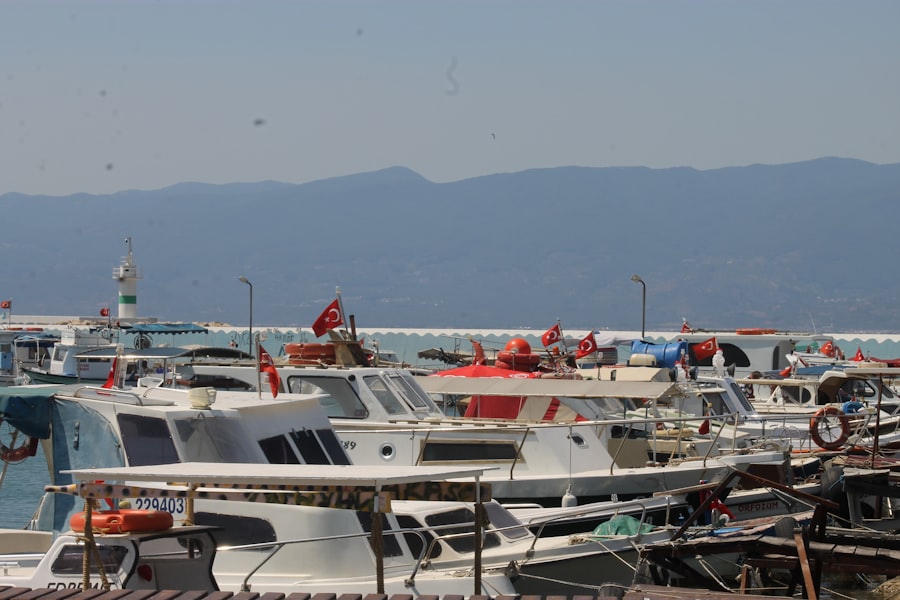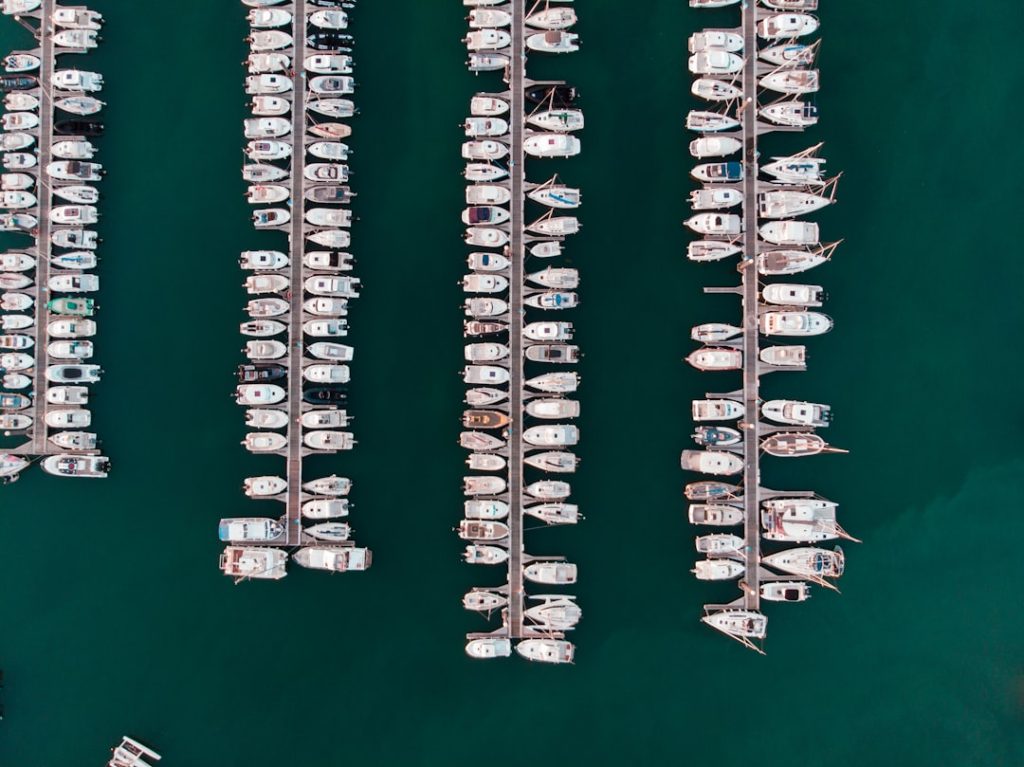The global yacht market has experienced remarkable growth over the past decade, driven by a confluence of factors that have made yachting more accessible and appealing to a broader demographic. The rise of disposable income among affluent individuals, particularly in emerging markets, has significantly contributed to this boom. Countries such as China, India, and Brazil have seen an increase in high-net-worth individuals who are eager to invest in luxury experiences, including yacht ownership.
This trend is not limited to traditional yachting hubs like the Mediterranean and the Caribbean; it is expanding into new territories, with regions like Southeast Asia and the Middle East becoming increasingly popular for yacht sales and charters. Moreover, the COVID-19 pandemic has shifted consumer preferences towards private travel options, further fueling interest in yachts. As people sought safe and secluded ways to vacation, many turned to yachts as a means of escape from crowded resorts and public spaces.
This shift has not only increased demand for yacht purchases but has also led to a surge in yacht charters. The market is now characterized by a diverse range of offerings, from smaller, more affordable vessels to extravagant superyachts equipped with state-of-the-art amenities. This diversification caters to various tastes and budgets, making yachting an attractive option for a wider audience.
Key Takeaways
- The yachts market is rapidly growing, driven by increasing demand and innovation.
- Modern yacht design focuses on advanced technology and luxury features.
- Buying a yacht involves careful navigation of legal, financial, and logistical steps.
- Popular yachting destinations offer diverse experiences for enthusiasts.
- Sustainable and safety practices are becoming essential in yacht ownership and chartering.
Identifying Key Trends in Yacht Design and Technology
The evolution of yacht design and technology is a fascinating aspect of the industry that reflects broader trends in consumer preferences and environmental consciousness. One of the most significant trends is the increasing emphasis on sustainability. Yacht manufacturers are now prioritizing eco-friendly materials and energy-efficient technologies in their designs.
For instance, many new yachts are being built with hybrid propulsion systems that combine traditional engines with electric motors, reducing fuel consumption and emissions. Additionally, solar panels are becoming a common feature on many vessels, allowing owners to harness renewable energy while at sea. Another notable trend is the integration of smart technology into yacht design.
Modern yachts are equipped with advanced automation systems that allow owners to control various aspects of their vessel remotely. From navigation and engine performance to lighting and entertainment systems, these smart technologies enhance the overall yachting experience. For example, some yachts now feature integrated apps that enable users to monitor their vessel’s status in real-time, receive alerts for maintenance needs, and even control onboard amenities from their smartphones.
This level of connectivity not only improves convenience but also enhances safety by providing critical information at the owner’s fingertips.
Navigating the Process of Purchasing a Yacht

Purchasing a yacht is a significant investment that requires careful consideration and planning. The first step in this process is determining the type of yacht that best suits one’s needs and lifestyle. Prospective buyers must consider factors such as size, purpose (whether for personal use or chartering), and budget.
For instance, a family looking for leisure cruising may opt for a mid-sized motor yacht with ample living space, while an adventurous individual might prefer a sailing yacht designed for long-distance voyages. Once the type of yacht is identified, buyers should engage with reputable yacht brokers who can provide valuable insights into the market and assist in finding suitable options. Brokers often have access to exclusive listings and can facilitate negotiations between buyers and sellers.
It is also essential to conduct thorough due diligence on any potential purchase. This includes reviewing the yacht’s history, inspecting its condition, and verifying its documentation. A marine surveyor can be invaluable during this stage, providing an expert assessment of the vessel’s structural integrity and mechanical systems.
Exploring the Top Destinations for Yachting
| Destination | Best Season | Average Water Temperature (°C) | Popular Activities | Number of Marinas | Accessibility |
|---|---|---|---|---|---|
| French Riviera, France | May – September | 22 – 27 | Luxury dining, beach clubs, cultural tours | 15 | International airports nearby |
| Greek Islands, Greece | April – October | 20 – 26 | Island hopping, snorkeling, historical sites | 20 | Ferries and airports |
| Caribbean, Various Islands | December – April | 25 – 29 | Diving, beach parties, fishing | 30 | International airports and ports |
| Whitsunday Islands, Australia | June – November | 23 – 27 | Great Barrier Reef tours, sailing, wildlife spotting | 5 | Regional airports |
| Amalfi Coast, Italy | April – October | 18 – 25 | Coastal sightseeing, local cuisine, historic towns | 8 | Nearby airports and train stations |
Yachting offers unparalleled opportunities to explore some of the world’s most breathtaking destinations. The Mediterranean remains a perennial favorite among yacht enthusiasts, with its stunning coastlines, crystal-clear waters, and rich cultural heritage. Destinations such as the Amalfi Coast in Italy, the Greek Islands, and the French Riviera are renowned for their picturesque scenery and vibrant nightlife.
Each location offers unique experiences, from exploring ancient ruins in Greece to indulging in gourmet cuisine in France. Beyond Europe, the Caribbean is another prime yachting destination known for its idyllic islands and warm climate. The British Virgin Islands, in particular, are famous for their sheltered waters and vibrant marine life, making them ideal for both novice and experienced sailors.
The Bahamas also attract yachters with their stunning beaches and vibrant coral reefs. In recent years, Southeast Asia has emerged as an exciting new frontier for yachting enthusiasts. Destinations like Thailand and Indonesia offer exotic landscapes, rich biodiversity, and a growing number of marinas catering to luxury yachts.
Understanding the Costs Associated with Yacht Ownership
Owning a yacht involves more than just the initial purchase price; it encompasses a range of ongoing costs that potential buyers must consider. These costs can be broadly categorized into fixed and variable expenses. Fixed costs typically include insurance premiums, docking fees at marinas, and annual maintenance expenses.
Insurance is particularly crucial as it protects against potential liabilities and damages; however, premiums can vary significantly based on factors such as the yacht’s value, size, and intended use. Variable costs can fluctuate based on usage patterns and include fuel expenses, crew salaries (if applicable), and provisions for onboard meals and entertainment. Fuel costs can be substantial, especially for larger motor yachts that consume significant amounts of diesel or gasoline.
Additionally, if owners choose to hire a crew for their yacht, salaries can add a considerable expense to the overall budget. It is also essential to factor in unexpected repairs or maintenance needs that may arise over time. A well-planned budget that accounts for both fixed and variable costs will help ensure that yacht ownership remains enjoyable rather than burdensome.
Ensuring Safety and Security on Your Yacht

Safety and security are paramount considerations for any yacht owner or charterer. The open sea presents unique challenges that require careful planning and preparation to mitigate risks effectively. One of the first steps in ensuring safety is equipping the yacht with essential safety gear such as life jackets, flares, fire extinguishers, and first aid kits.
Regular safety drills should also be conducted with all onboard to ensure everyone knows how to respond in emergencies. In addition to physical safety measures, security against theft or vandalism is crucial, especially when mooring in unfamiliar ports or marinas. Many modern yachts come equipped with advanced security systems that include GPS tracking devices and alarm systems that alert owners to unauthorized access or movement of the vessel.
Furthermore, establishing good relationships with marina staff can enhance security; they often keep an eye on vessels while docked and can provide valuable local knowledge about potential risks.
Making the Most of Yacht Chartering Options
For those who may not be ready to commit to full ownership or who wish to experience yachting without the associated responsibilities, chartering presents an attractive alternative. Yacht chartering allows individuals or groups to rent a vessel for a specified period, providing access to luxury amenities without the long-term commitment of ownership. Chartering options range from bareboat charters—where clients take full control of the vessel—to crewed charters that include professional staff to handle navigation, cooking, and cleaning.
When considering chartering options, it is essential to research reputable charter companies that offer well-maintained vessels with experienced crews. Many charter companies provide detailed itineraries tailored to clients’ preferences, allowing them to explore specific destinations or engage in activities such as diving or fishing. Additionally, chartering can be an excellent way to test different types of yachts before making a purchase decision; clients can experience various styles and sizes firsthand while enjoying luxurious vacations.
Embracing Sustainable Practices in the Yachting Industry
As environmental concerns continue to gain prominence globally, the yachting industry is increasingly embracing sustainable practices aimed at reducing its ecological footprint. Many manufacturers are now focusing on building yachts using sustainable materials such as recycled aluminum or eco-friendly composites that minimize environmental impact during production. Additionally, there is a growing trend towards designing yachts that utilize renewable energy sources like wind and solar power.
Moreover, initiatives aimed at protecting marine ecosystems are becoming more prevalent within the industry. Organizations dedicated to ocean conservation are collaborating with yacht owners and manufacturers to promote responsible practices such as waste management systems onboard that prevent pollution at sea. Many yacht owners are also choosing to participate in eco-friendly charters that support local conservation efforts while enjoying their time on the water.
By prioritizing sustainability, the yachting industry not only addresses environmental challenges but also appeals to a new generation of eco-conscious consumers who value responsible luxury experiences.


